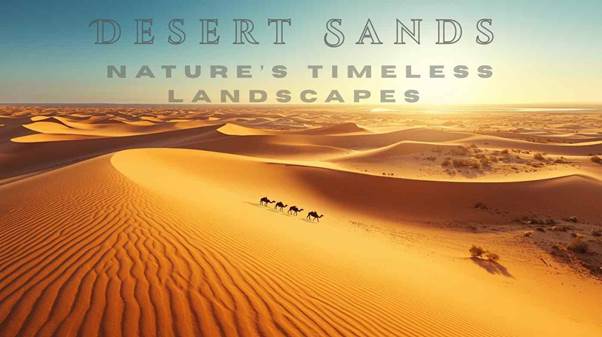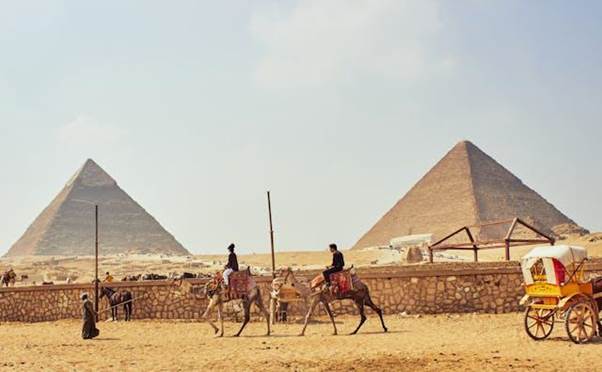The sweeping beauty of desert sands has fascinated explorers, scientists, and travelers for centuries. From the towering dunes of the Sahara to the shifting patterns of the Arabian Desert, these sandy expanses are more than just barren wastelands. Desert sands represent a dynamic system shaped by wind, climate, and time, offering unique ecological, cultural, and economic significance.
Table of Contents
In this article, we will explore the definition and formation of desert sands, their history and importance, the benefits they bring, the challenges they face, and some fascinating real-world examples that reveal their mysteries.

Defining Desert Sands
Desert sands are granular particles of rock, primarily composed of quartz, that accumulate in arid environments where wind erosion dominates. Unlike soils found in fertile regions, these sands are typically low in nutrients and moisture. Their fine texture and mobility, however, allow for striking formations such as sand dunes, ripples, and seas of sand that stretch across vast desert landscapes.
Composition and Features
- Predominantly made of quartz with traces of feldspar and mica
- Uniform grain sizes due to wind erosion
- Ability to form patterns like crescents, stars, and linear dunes
These characteristics make desert sands a unique geological phenomenon that continues to evolve.
Related article: Desert Dwellers: Life in the Harsh Sands
The Evolution and History of Desert Sands
Origins of Sand in Deserts
The creation of desert sands dates back millions of years. Rocks broken down by weathering processes and transported by rivers or wind eventually accumulate in arid basins. Over time, these sediments transform into the sand seas we see today.
Human Connection to Desert Sands
Throughout history, human civilizations have interacted with desert sands in diverse ways. The Silk Road traders crossed sandy deserts, camels adapted as transport animals, and nomadic tribes developed lifestyles that depended on navigating these landscapes. Desert sands, therefore, hold both geological and cultural history.
Importance of Desert Sands in Ecosystems
Role in Ecology
Although deserts appear lifeless, desert sands provide habitats for many specialized organisms. Insects, reptiles, and small mammals burrow beneath the sands to escape the harsh daytime heat. Desert plants like cacti and shrubs anchor their roots deep beneath sandy soils, showcasing remarkable adaptations.
Contribution to Climate Systems
Desert sands also play a role in regulating global climate. Dust storms originating in sandy deserts transport minerals across continents, fertilizing distant ecosystems such as the Amazon rainforest. This natural nutrient cycle demonstrates the hidden power of desert sands.
Benefits of Desert Sands to Humans
Economic Value
- Construction: Sand is a critical component in making concrete, glass, and ceramics.
- Tourism: Destinations like the Sahara and Arabian deserts attract millions of visitors annually.
- Renewable Energy: Vast sandy deserts offer ideal locations for solar farms, harnessing abundant sunlight.
Cultural Significance
From poetry to folklore, desert sands have inspired countless stories, symbolizing endurance, timelessness, and mystery. Festivals and desert safaris highlight their role in human culture.
Adaptations to Life on Desert Sands
Survival of Animals
Animals living on desert sands exhibit extraordinary adaptations:
- Fennec foxes with large ears for cooling
- Lizards with fringed toes to move across loose sands
- Beetles that collect dew drops to survive
Human Innovations
Communities in sandy deserts innovate with water-conserving techniques such as qanats and oases, demonstrating resilience in the face of challenging conditions.

Challenges Facing Desert Sands
Environmental Concerns
- Sand Mining: Overextraction for construction materials disrupts fragile ecosystems.
- Desertification: Climate change and deforestation expand sandy deserts into fertile land.
Impact of Human Activity
Light pollution, off-road driving, and unsustainable tourism damage natural dune systems, threatening the integrity of desert sands worldwide
Related article: Blue Deserts: The Hidden Challenge of Ocean Ecosystems
Real-World Examples of Desert Sands
Sahara Desert
The Sahara, the largest hot desert, showcases endless desert sands with dunes reaching heights of up to 180 meters. It also influences global climate through massive dust storms.
Arabian Desert
Known for its iconic Rub’ al Khali or Empty Quarter, the Arabian Desert highlights the extremes of life amidst sand seas, where nomadic Bedouins thrive.
Gobi Desert
While less sandy than the Sahara, the Gobi Desert has significant areas of desert sands that host unique species adapted to its harsh climate.
Conservation of Desert Sands
Strategies for Protection
- Limiting sand mining through regulation
- Promoting eco-tourism rather than mass tourism
- Restoring vegetation to reduce desertification
Role of Communities
Local involvement is crucial. Education programs and sustainable practices ensure desert sands are preserved for future generations.
Related article: The Unique World of Desert Ecosystems
Conclusion
Desert sands are not just endless seas of grains; they are living landscapes with immense geological, ecological, and cultural significance. From their role in shaping ecosystems to their economic and cultural value, desert sands remain vital to both nature and humanity. Yet, they face growing challenges from human exploitation and climate change. By recognizing their importance and supporting conservation efforts, we can ensure that these timeless landscapes continue to inspire and sustain life across the globe.
Q1: What are desert sands made of?
Desert sands are mostly composed of fine particles of quartz, feldspar, and other minerals shaped by wind and erosion over time.
Q2: Why are desert sands important?
Desert sands play a key role in ecosystems by supporting unique plants and animals, influencing climate, and even shaping human culture and history.
Q3: How are desert sands affected by human activity?
Overgrazing, mining, and climate change disrupt natural sand movement, leading to desertification and loss of biodiversity.
Pingback: The Unique World of Desert Ecosystems - Regarding Planet-Home
Pingback: Desert Dwellers: Life in the Harsh Sands - Regarding Planet-Home
Pingback: Blue Deserts: The Hidden Challenge of Ocean Ecosystems - Regarding Planet-Home